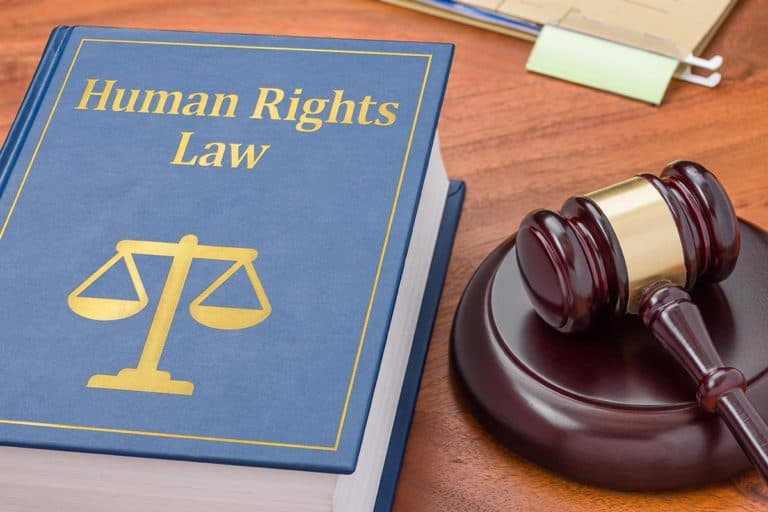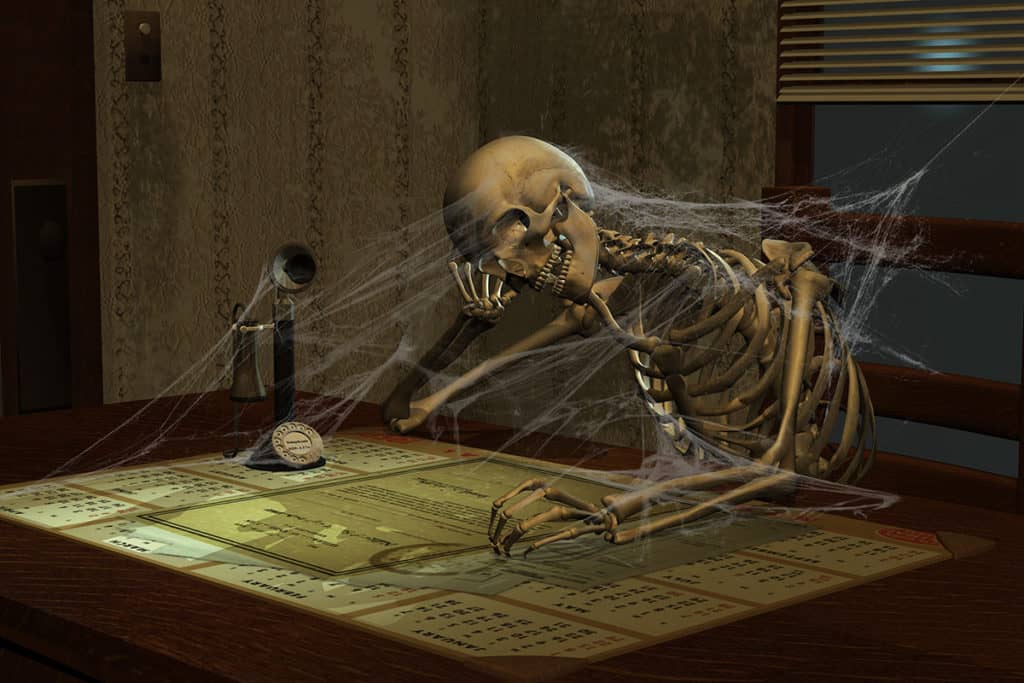In a 5-4 decision in Ward v Quebec, Canada’s Supreme Court (SCC) redefined the reasonable person. I’m now on the wrong side. Are You? Let’s find out.
A constant theme behind changing the conversations is the idea of reasonableness. And Ward v Quebec is the perfect legal case to set the stage.
Setting the Stage
On October 29, 2021, in a narrow 5-4 ruling, the highest court in Canada overturned forty years of discrimination law. The case was Ward v. Quebec . The majority did not base their decision on expert testimony or new evidence. On the contrary, their decision went against more than forty years of well-respected scientific research.
It was simply their legal opinion that:
- The Tribunal did not follow SCC case law.
- The Quebec Human Rights Commission and Tribunal had been long-overstepping their boundaries.
- Discrimination had not occurred.
- Any reasonable person would agree that there had not been discrimination.
The Ward Majority Opinion
Specifically, the majority wrote:
“[4] … With respect, we are of the view that [the Tribunal] deviates from this Court’s jurisprudence …
[28] The Quebec Charter gives the Tribunal direct, albeit limited, jurisdiction … However, this limited direct jurisdiction has been extended indirectly in recent decades …
[7] In this case, we are of the opinion that the elements of a discrimination claim under the Quebec Charter have not been established. …
[110] … A reasonable person could not view the comments made by Mr. Ward, considered in their context, as likely to lead to discriminatory treatment of Mr. Gabriel.”
Altering Definitions To Make Their Opinion Fit
But their approach was problematic. The SCC majority could not logically explain their opinion without making two significant changes to Canadian law.
First, they modified the long-standing international standard of a reasonable person:
“[82] In our view, the perception of a reasonable person targeted by the same words must be excluded. That approach results in a shift toward protecting a right not to be offended, which has no place in a democratic society.” [Emphasis added.]
Second, they chose the Whatcott decision over Calego as the case precedent:
“[30] … Our analysis … draw[s] from the principles established in Whatcott, with the necessary modifications.”
Similar Court Decisions Must Be Considered
“Jurisprudence” refers to the body of case law on a particular topic. In making a decision on a current case, a judge or jury must look back to what has been decided in similar past cases. Judges, particularly in the trial and appeals courts, need to have a good reason for straying from this case law. If they don’t, their decision will likely be overturned.
The SCC Ward majority said the tribunal and appeals court had not based their decision on the correct law. Yet Calego, a case about discrimination, has been the accepted precedent for many years in discrimination cases.
On the other hand, Whatcott has nothing to do with the harm caused to an individual due to discrimination. It is a case about the much more serious matter of hate speech. Hate speech targets a disadvantaged group with the intent of getting others to join in on the hating. To make it fit as a precedent, the Ward majority justices had to make “necessary modifications.”
Resurrected Stereotypes Found In The General Public
Equally troubling, the Ward majority went so far as to resurrect harmful – and wrong – victim stereotypes. In their own words [emphasis added], they said the “recent decades” of decisions deviated from the SCC’s jurisprudence:
“[4] … leads to … significant monetary awards against the speakers.
[29] … dispenses with any fair balancing of freedom of expression and protection of the right to the safeguard of dignity.
It therefore creates a second avenue of recourse for discrimination, parallel to an action in defamation,
to compel a person to answer for the harm caused by their words,
with a much less onerous burden of proof on the complainant,
who is in fact not required to bring their own proceedings if the Commission agrees to act on their behalf.”
We can all be prone to building biases and stereotypes into our mindsets when we do not fully understand the legal process. It was therefore shocking to hear these biases repeated by Supreme Court Justices, who are held to a higher reasonable standard.
Mirror To The Past
Their list mirrored the voices of participants in my training sessions in the early 1990s:
- we can’t say anything anymore—nobody can take a joke
- people complain just to get money
- the complainant holds all the power
- the burden of proof is too low
- people would choose the tribunal option for a free ride—if the respondent loses and chooses to appeal, the Commission, not the complainant, covers the legal costs (since the Commission represents the complainant)
If you know little of human rights law, you might be left thinking that filing a human rights complaint is a walk in the park.
Absolutely Not Reasonable, Say the Dissenting Judges
The remaining four judges, with their reliance on decades of legal decisions and evidence-based research, did not hold back in their dissent. First, they said that Calego should remain the standard for discrimination cases, because it speaks to individual, not just societal, harm:
“Section 10 [of the Quebec Charter] should continue to be interpreted in a way that allows for this individual harm to be addressed, in keeping with the standard set out by the Court of Appeal in Calego.”
They outlined the critical components in Calego, including what the majority opinion changed: a reasonable person targeted by the same words (that is, in the same circumstances). Broken down, Calego requires:
- speech based on a protected (enumerated) ground—in this case, disability
- the very high standard of a contemptuous affront to a person’s identity—all the jokes focused on disability
- behaviour that resulted in serious consequences—Jérémy considered suicide
reasonableness according to that person’s circumstances—a child being bullied by an adult
In their own words:
“[163] Following Calego, speech based on an enumerated ground will violate the s. 10 guarantee of equality in the exercise of the s. 4 right to the safeguard of one’s dignity when it constitutes such a contemptuous affront to the individual’s identity that it would have serious consequences for the reasonable person in that individual’s circumstances.”
Generations of Work Toward Protecting Individuals
The dissenting judges spoke of the existing efforts toward protecting individuals, particularly children:
“[116] This country has spent generations working towards creating a society that values human rights and protects individuals from harm caused by their differences of race, religion, disability, colour, or sexual orientation, among other grounds.
We would never tolerate humiliating or dehumanizing conduct towards children with disabilities; there is no principled basis for tolerating words that have the same abusive effect.
Wrapping such discriminatory conduct in the protective cloak of speech does not make it any less intolerable when that speech amounts to wilful emotional abuse of a disabled child.”
And they noted that provincial and federal governments, as well as the courts, have consistently compensated for harmful speech. This case, they argued, is not about free speech; it is about the devastating harm to a child.
Specifically, they argued:
“[117] Legislatures and the courts have consistently taken action to prevent and compensate for the serious harm that can be caused by speech.
This is not, therefore, primarily a case about artistic freedom.
It is a case about the rights of vulnerable and marginalized individuals, particularly children with disabilities, to be free from public humiliation, cruelty, vilification and bullying that singles them out on the basis of their disability and the devastating harm to their dignity that results.
Unsurprisingly, given the tenor of the jokes and his young age, the impact on the child here was severe. He was ostracized from his peer group and experienced suicidal thoughts.”
Discredited Conception of Definition
Finally, the dissenting justices politely, but strongly, condemned the use of a discredited definition of discrimination:
A Deeper Exploration
Mirroring the dissenting opinion, the Ward decision astonished those most familiar with the issues and jurisprudence surrounding discrimination. We will look at discrimination and systemic discrimination in later articles. But first, of great concern to me is how the Court vastly modified the definition of what it means to be reasonable, and what we are expected to find acceptable.



